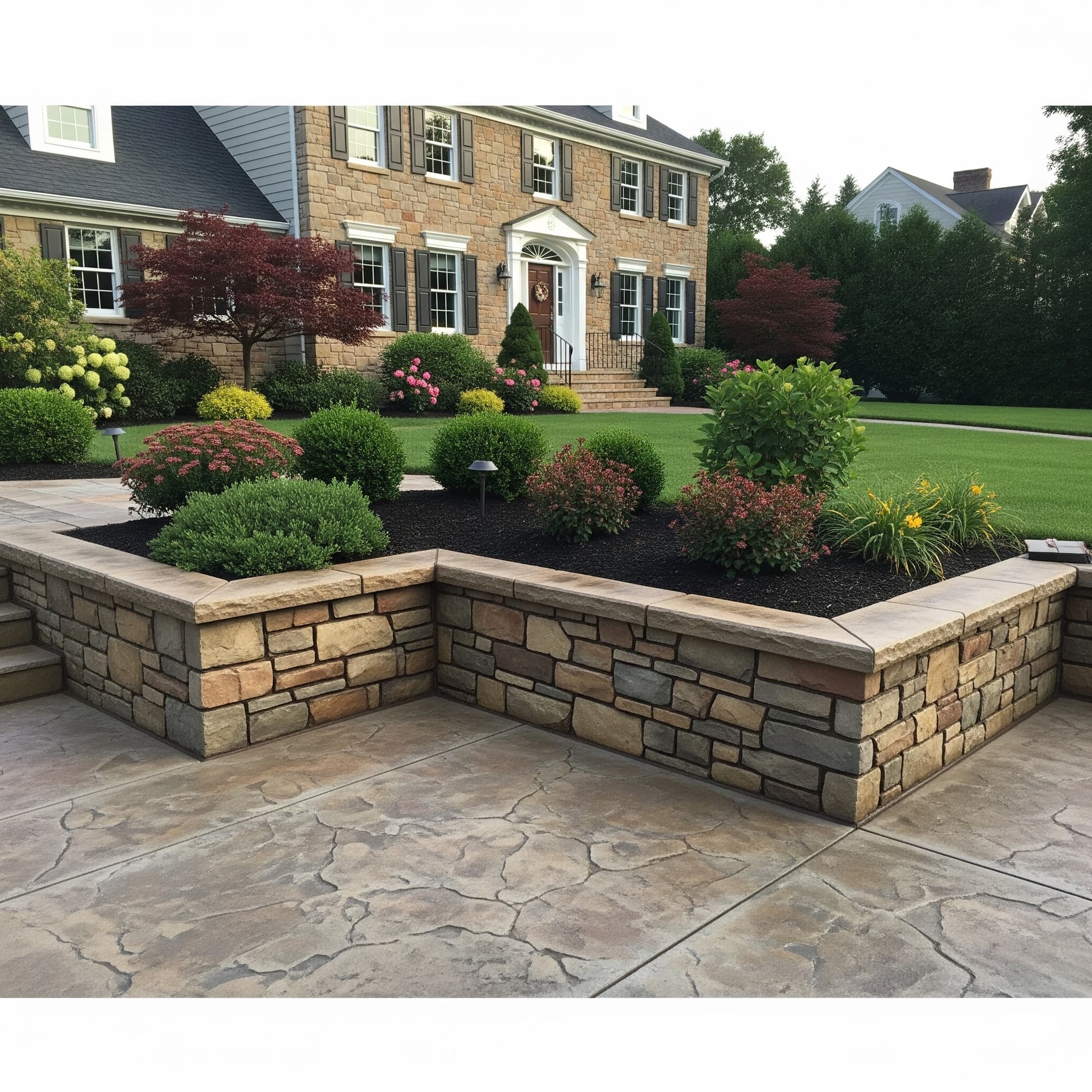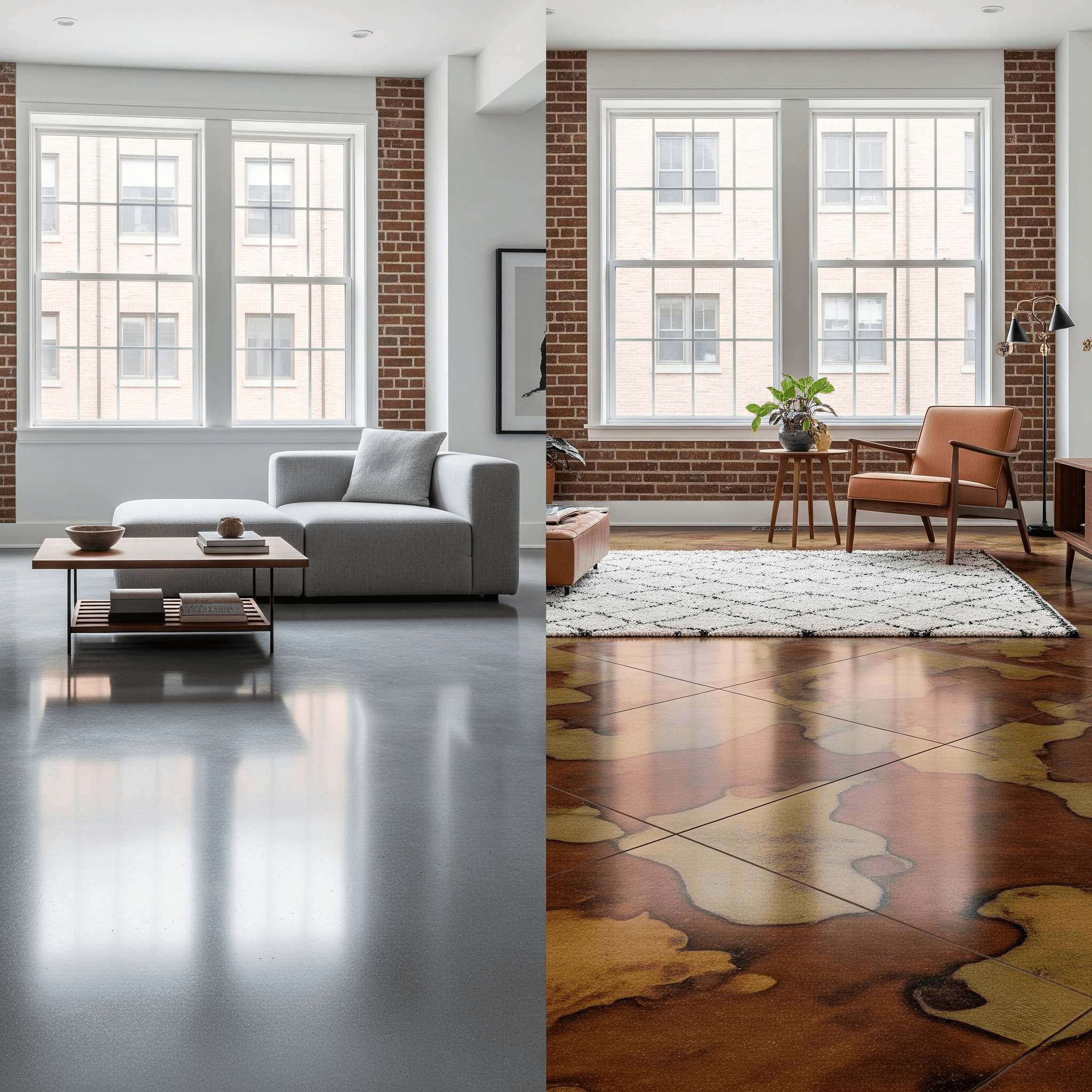
Concrete Slab vs. Raised Foundation in Bridgeport’s Flood Zones
Concrete Slab
Bridgeport’s coastal location and participation in FEMA’s National Flood Insurance Program creates unique foundation challenges for homeowners throughout the city. With significant portions of the city located in Special Flood Hazard Areas, including waterfront properties near Steel Point and low-lying areas around Marina Village, understanding foundation options becomes critical for both new construction and existing property improvements. Connecticut’s building codes and FEMA regulations establish specific requirements that influence foundation decisions throughout Bridgeport’s diverse neighborhoods.
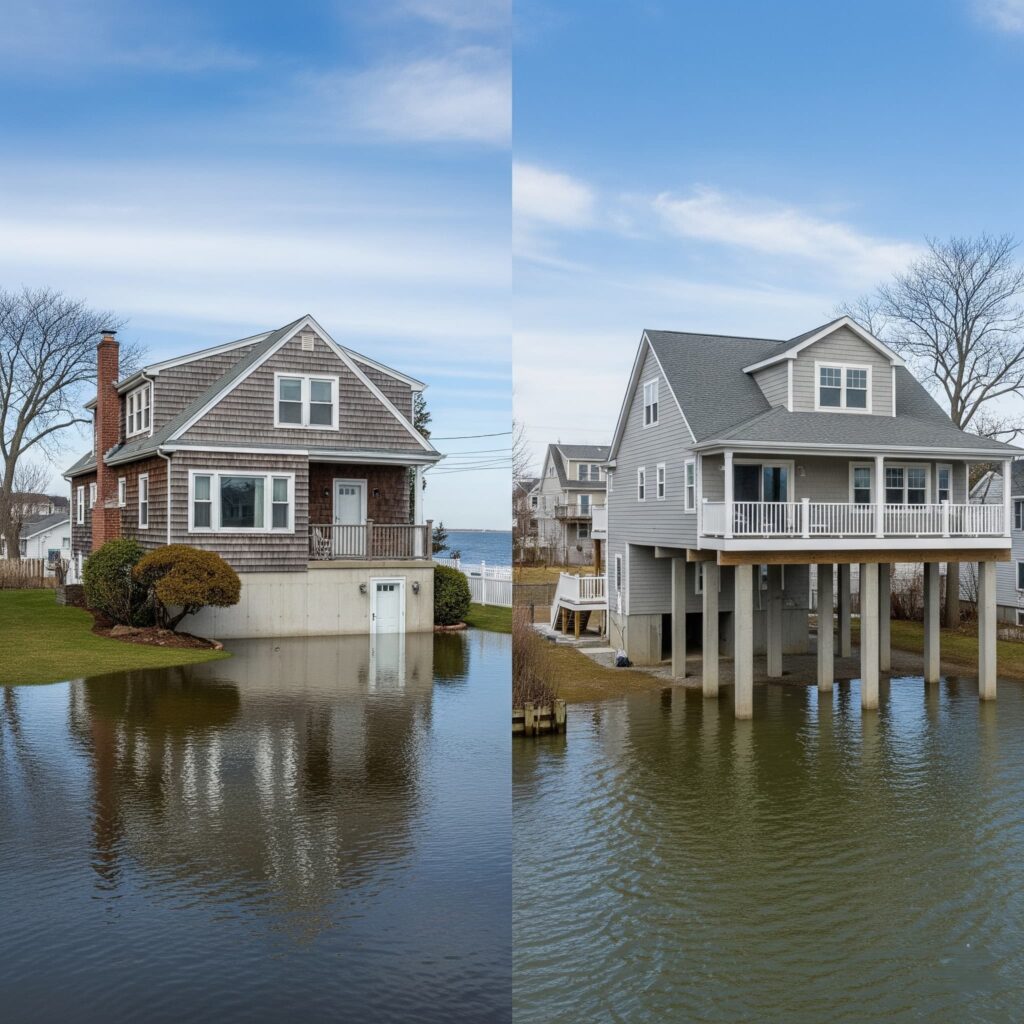
Understanding Bridgeport’s Flood Zone Classifications
FEMA flood maps designate different risk levels throughout Bridgeport, with each zone carrying specific foundation requirements. Properties in high-risk areas face mandatory elevation standards and insurance requirements that significantly impact foundation selection and construction costs.
Special Flood Hazard Area Designations
Areas with a 1 percent or higher annual flood chance qualify as Special Flood Hazard Areas, requiring specific foundation approaches. Zone A areas experience slow-moving floodwater without significant wave action, while Coastal A zones face potential wave damage. Zone V areas, primarily along Bridgeport’s immediate coastline, encounter storm surge and breaking waves requiring the most stringent foundation standards.
Base Flood Elevation Requirements
Connecticut requires the lowest structural elements to be elevated a minimum of one foot above Base Flood Elevation in designated flood zones. This standard applies throughout Bridgeport’s flood-prone areas, including neighborhoods near Long Island Sound and properties adjacent to the Pequonnock River. Local zoning enforcement officers may establish additional requirements based on specific site conditions.
Concrete Slab Foundation Performance in Flood Zones
Traditional concrete slabs present significant challenges in Bridgeport’s flood-prone areas due to their ground-level positioning and limited elevation capability. Understanding these limitations helps homeowners make informed decisions about foundation suitability for specific locations.
Standard Slab Limitations
Conventional concrete slabs poured directly on grade provide minimal flood protection, making them unsuitable for properties in Special Flood Hazard Areas without significant modification. Water intrusion at slab edges, potential undermining from scour, and difficult utility access during flooding create substantial vulnerability for homes throughout flood-prone sections of Bridgeport.
Raised Slab Foundation Options
Raised concrete slabs elevated on filled stem walls offer improved flood protection while maintaining slab-style construction. This approach involves constructing reinforced concrete or masonry stem walls to the required heights, filling the interior with compacted material, and pouring the slab on top. Properties near areas like Pleasure Beach or the East End can achieve FEMA compliance through this method when properly designed and engineered.
Elevated Foundation Systems for Flood Protection
Pier, pile, post, and column foundations provide superior flood resistance by elevating living spaces above potential flood levels. These systems allow floodwater to flow beneath structures rather than applying destructive pressure to foundation elements.
Pier and Column Foundation Benefits
Concrete masonry or cast-in-place concrete piers offer excellent flood protection for areas experiencing slow-moving floodwater without significant debris impact. The traditional pier-and-beam system generally represents the least expensive elevated foundation option while providing substantial flood protection. Properties throughout neighborhoods like Black Rock or the Hollow benefit from this approach when properly designed for local soil conditions.
Deep Foundation Pile Systems
Driven timber or steel piles extend deep into stable soil layers, providing maximum resistance to scour and erosion. These systems work particularly well for waterfront properties near Bridgeport Harbor or areas with unstable soil conditions. While more expensive than shallow foundation systems, piles offer superior long-term performance in challenging coastal environments.
Cost Analysis for Different Foundation Types
Foundation selection significantly impacts both initial construction costs and long-term maintenance expenses. Understanding these financial implications helps property owners make cost-effective decisions that balance upfront investment with long-term value.
Concrete Slab Foundation Costs
Standard concrete slabs typically cost $6 to $12 per square foot installed, making them the most economical foundation option for areas without flood risk. However, raised slab systems required for flood compliance increase costs to $8 to $15 per square foot due to additional stem wall construction and fill requirements. Properties requiring FEMA compliance face mandatory engineering and permitting costs that further increase total project expenses.
Elevated Foundation Investment
Pier and beam foundations cost $7 to $12 per square foot installed, representing modest increases over raised slab costs while providing superior flood protection. Deep pile foundations command premium pricing but offer maximum protection for high-risk coastal properties. The pier-and-beam approach generally provides the best value balance between flood protection and construction costs for most Bridgeport applications.
Insurance and Regulatory Considerations
Foundation selection directly affects flood insurance requirements, premiums, and regulatory compliance. Properties in Special Flood Hazard Areas face mandatory flood insurance requirements that vary based on foundation type and elevation above Base Flood Elevation.
National Flood Insurance Program Requirements
Properties with federally backed mortgages in Special Flood Hazard Areas must carry flood insurance through the National Flood Insurance Program. Foundation elevation above Base Flood Elevation can significantly reduce insurance premiums, while non-compliant foundations may face coverage limitations or increased costs. Proper documentation of foundation elevation and compliance becomes crucial for insurance qualification.
Building Code Compliance
Connecticut’s State Building Code incorporates specific flood zone requirements that vary by risk level. Coastal high-hazard areas prohibit fill or stem wall foundations for structural support, mandating pile or column systems. Properties in Zone A areas have more flexibility but must still meet elevation requirements and proper anchoring standards.
Maintenance and Long-Term Performance
Different foundation types require varying maintenance approaches and offer different service life expectations. Understanding these factors helps property owners plan for long-term ownership costs and performance expectations.
Concrete Slab Maintenance
Raised concrete slabs require periodic inspection of stem walls for cracking or water intrusion, along with proper drainage maintenance to prevent water accumulation. Utility repairs in slab foundations can prove challenging and expensive, particularly for plumbing systems embedded within the concrete. Properties near salt air exposure face accelerated deterioration requiring more frequent maintenance.
Elevated Foundation Care
Pier and pile foundations require annual inspection of all support elements and fasteners to identify cracking, corrosion, or structural issues. The open design allows easy access for utility maintenance and repair, reducing long-term service costs. Proper ventilation in elevated spaces prevents moisture accumulation and extends foundation life, particularly important in Bridgeport’s humid coastal climate.
Environmental and Climate Considerations
Bridgeport’s coastal environment presents unique challenges, including salt air exposure, freeze-thaw cycles, and rising sea levels. Foundation selection must account for these environmental factors to ensure long-term performance and compliance with evolving regulations.
Sea Level Rise Planning
FEMA recommends considering additional elevation beyond minimum requirements to account for expected sea level rise over the foundation’s service life. The Resilient Bridgeport Coastal Flood Defense System addresses some flood risks, but individual properties benefit from conservative elevation planning. Properties throughout the city’s coastal areas should consider 2.5 feet of additional sea level rise over 50-year periods when planning foundation elevation.
Freeze-Thaw Resistance
Connecticut’s climate requires air-entrained concrete in all foundation applications to resist freeze-thaw damage. Elevated foundations face additional exposure to temperature variations, requiring careful material selection and protection systems. Proper drainage and moisture control become critical for preventing ice formation that can damage foundation elements.
Retrofitting Existing Foundations
Many existing Bridgeport properties feature foundations that predate current flood zone requirements. Understanding retrofit options helps property owners improve flood resistance and insurance compliance for existing structures.
House Lifting and Foundation Replacement
Elevating existing structures on new pier or pile foundations costs $30,000 to $100,00,0, depending on size and complexity. This approach provides maximum flood protection for existing structures while allowing full foundation system upgrades. Properties throughout Bridgeport’s older neighborhoods may qualify for FEMA mitigation grants to help offset elevation costs.
Slab Modification Alternatives
Existing slab foundations can sometimes be modified through perimeter wall construction and interior filling to achieve the required elevations. While less expensive than complete replacement, this approach has limitations and may not provide optimal long-term performance. Professional engineering evaluation determines the feasibility for specific properties and soil conditions.
Professional Design and Implementation
Foundation projects in flood zones require professional engineering and careful compliance with multiple regulatory requirements. Working with experienced professionals ensures proper design, permitting, and construction for long-term performance and regulatory compliance.
Engineering and Permitting Requirements
Flood zone construction requires professional engineering certification for foundation design and anchoring systems. Permit processes involve multiple agencies and detailed documentation of compliance with flood zone requirements. Connecticut’s building officials require specific documentation and inspection procedures that vary by location and foundation type.
Construction Quality Standards
Flood-resistant construction demands careful attention to material selection, anchoring systems, and utility protection. All materials below the Base Flood Elevation must resist flood damage, requiring specialized products and installation techniques. Proper construction quality directly affects long-term performance and insurance qualification.
Expert Foundation Solutions with Bridgeport Concrete Solutions
At Bridgeport Concrete Solutions, we understand the complex requirements for foundation construction in Bridgeport’s flood zones. Our experience with FEMA regulations, Connecticut building codes, and local soil conditions ensures proper foundation selection and installation for your specific site and risk level. Whether you need raised slab construction for moderate flood risk areas or elevated pier systems for high-risk coastal properties, we provide professional guidance throughout the design, permitting, and construction process. Our commitment to quality construction and regulatory compliance helps protect your investment while meeting all insurance and safety requirements for long-term peace of mind.
LATEST POSTS


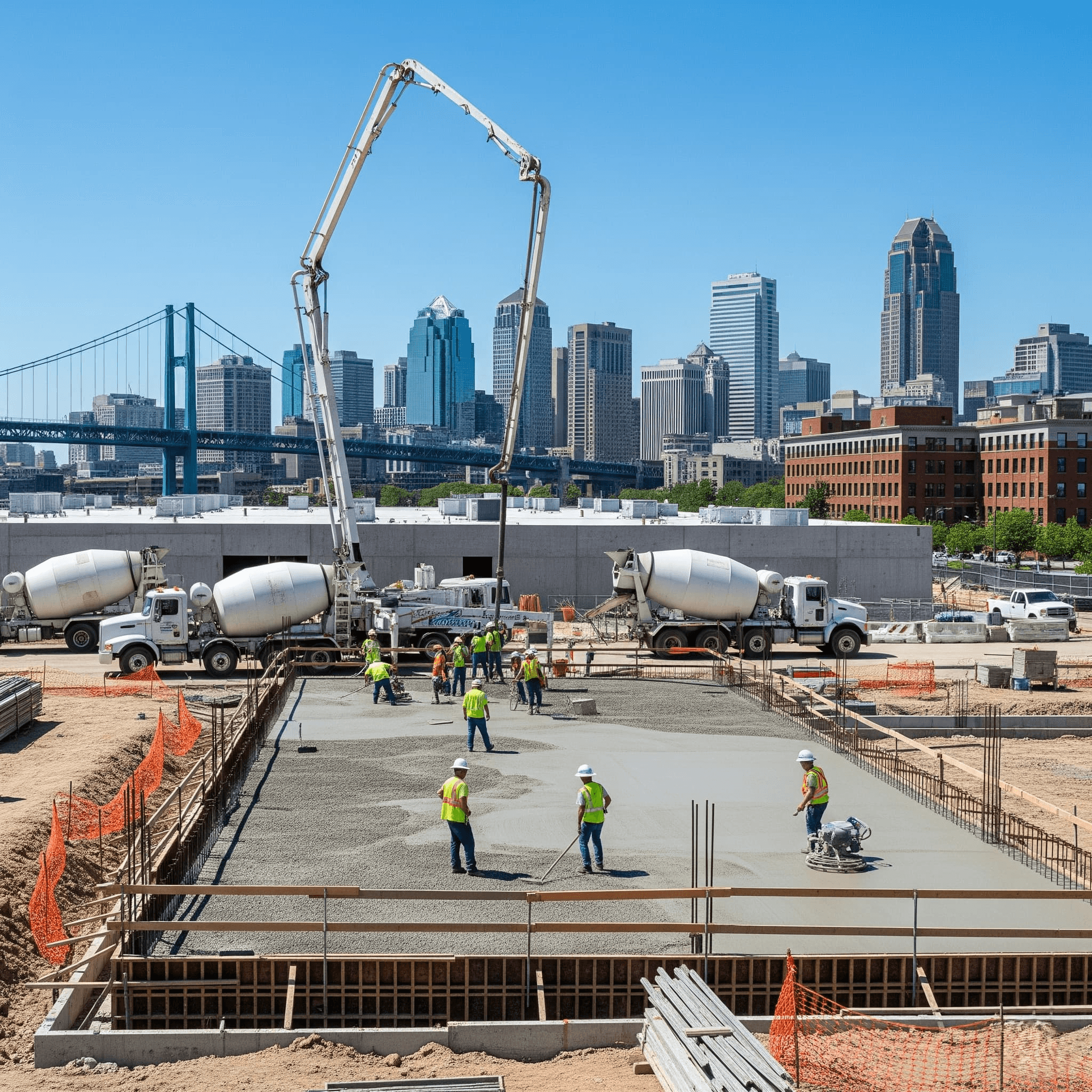
Eco-Friendly Commercial Concrete Materials Popular in Bridgeport
